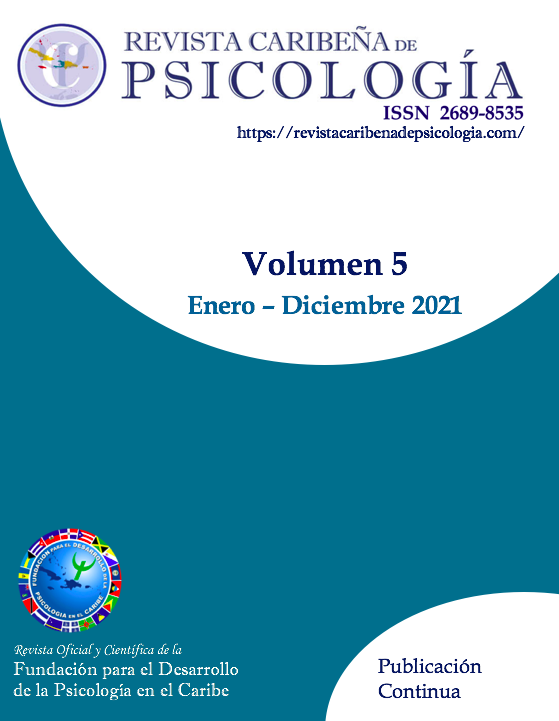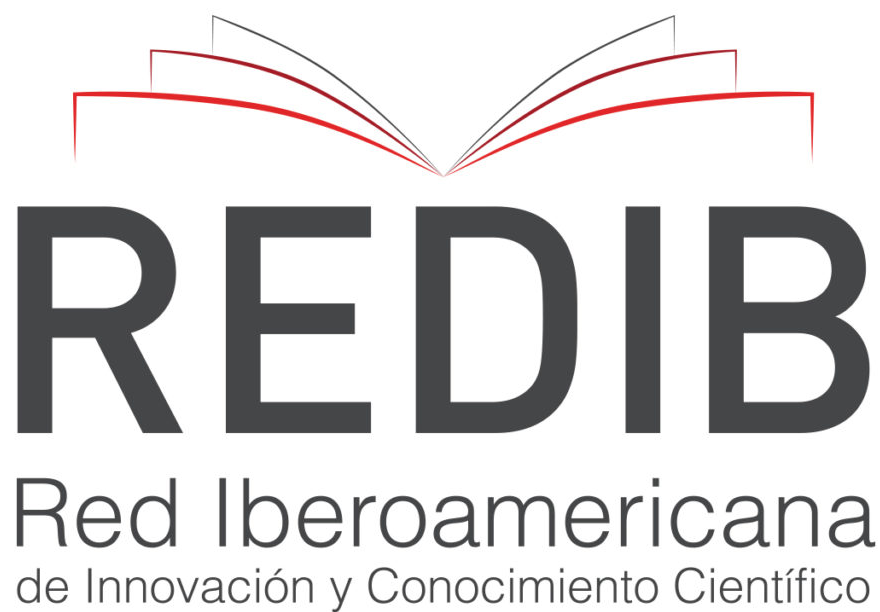Analysis of psychometric properties of the Self-efficacy at Work Scale in a sample of people employed in Puerto Rico
DOI:
https://doi.org/10.37226/rcp.v5i1.5367Keywords:
self-efficacy, work self-efficacy, psychometric analysisAbstract
The purpose of this study is to determine the psychometric properties of the Work Self-Efficacy Scale (WSES): construct validity, item analysis, reliability analysis, and discriminant validity. This study consisted of secondary data analysis with a total sample of 678 participants working in various organizations in Puerto Rico. This research shows that the scale does not meet the criteria of discriminant validity between the factors of commitment and relational willingness. We conclude that one of the factors that influence the fact that the scale does not have good psychometric characteristics is the lack of different degrees of challenge or impediment for successful performance in writing the scale items, which Bandura recommends.
References
Akkermans, J., Brenninkmeijer, V., Schaufeli, W. B., & Blonk, R. W. B. (2015). It's all about career skills: Effectiveness of a ca-reer development intervention for young employees. Human Resource Management, 54(4), 533–551. https://doi.org/10.1002/hrm.21633
Alvarino, J. (2018). Niveles de autoeficacia laboral en profesionales de los establecimientos de salud de la cuidad de Cajamarca (Diserta-ción doctoral, Universidad Privada Antonio Guillermo Urre-lo). Repositorio Intitucional- La Universidad de Cajamarca.
Avallone, F., Pepe, S., & Porcelli, R. (2007). Autoefficacia percepita nella ricerca del lavoro: scale di misura. In Isfol, Bisogni, valori e autoefficacia nella scelta del lavoro. ISFOL, 133-142.
Bandura, A. (1977). Social learning theory. Editorial Prentice-Hall.
Bandura, A. (1986). Social foundations of thought and action: A social cognitive theory. Editorial Prentice-Hall. https://doi.org/10.1037/0003-066X.44.9.1175
Bandura, A. (1997). Self-efficacy: The exercise of control. Editorial Henry Holt & Co.
Bandura, A. (1999). A social–cognitive theory of personality. In L. Pervin & O. John (Eds.), Handbook of personality, (pp. 154 –196). Editorial Guilford Press.
Bandura, A. (2001). Social cognitive theory: an agentic perspec-tive. Annual Review of Psychology, 52, 1–26. https://doi.org/10.1146/annurev.psych.52.1.1
Bandura, A. (2006) Guide for constructing self-efficacy scales. En F. Pajares & T. Urdan (Eds.). Self-efficacy beliefs of adolescents, age information publishing (pp. 307-337). Editorial Greenwich.
Calderón, M. (2018). Relación de la satisfacción laboral afectiva y la autoeficacia laboral en trabajadores profesionales peruanos (Disertación doctoral, Universidad San Ignacio de Layola). Repositorio Institutional- Universidad San Ingnacio de Layola.
Consuelo, N. (2020). Autoeficacia laboral y satisfacción laboral en trabajadores de recursos humanos de una consultora privada de Li-ma Metropolitana (Disertación doctoral, Universidad San Ig-nacio de Loyola). Repositorio Institucional- Universidad San Ignacio de Layola.
Cherniss, C. (1993). Role of professional self-efficacy in the etiolo-gy and amelioration of burnout. En W. Schaufeli & C. Maslach (Eds.). Professional burnout: Recent developments in the-ory and research (pp. 135-150). Editorial Taylor-Francis.
Doornik, J. A., & Hansen, H. (2008). An omnibus test for univari-ate and multivariate normality. Oxford Bulletin of Economics and Statistics, 70, 927–939. https://doi.org/10.1111/j.1468-0084.2008.00537.x
Ferrari, H., Nunes M., & Marín, F. (2017). Autoeficacia en el tra-bajo: Revisión bibliométrica entre 2004 y 2014 en la base de da-tos ebsco-Academic Search. Psicología desde el Caribe, 3(3), 204-218. http://dx.doi.org/10.14482/psdc.34.3.11141
Fida, R., Paciello, M., Tramontano, C., Barbaranelli, C., & Farnese, ML (2015). “Yes, I Can”: The protective role of personal self-efficacy in hindering counterproductive work behavior un-der stressful conditions. Anxiety, Stress & Coping: An Interna-tional Journal, 28(5), 479-499. https://dx.doi.org/10.1080/10615806.2014.969718
Fornell, C., & Larcker, D. F. (1981). Evaluating structural equation models with unobservable variables and measurement error. Journal of Marketing Research, 18(2), 39–50. https://doi.org/10.2307/3151312
Grau, R., Salanova, M., & Peiró, J.M. (2000). Efectos moduladores de autoeficacia en el estrés laboral. Apuntes de Psicología, 18, 57-75. http://www.apuntesdepsicologia.es/index.php/revista/article/view/414/334
Hernández, L., & Oramas, A. (2016). Autoeficacia y work engagement en trabajadores de diferentes ocupaciones asistenciales. Revista Cubana de Salud y Trabajo, 17(4), 232-41. http://www.revsaludtrabajo.sld.cu/index.php/revsyt/article/view/42/54
Kline, T. J. B. (2005). Psychological testing: A practical approach to design and evaluation. Editorial SAGE Publications.
Lagerveld, E., Blonk, W., Brenninkmeijer, V., & Schaufeli, W. (2010). Return to work among employees with mental health problems: Development and validation of a self-efficacy questionnaire. Work & Stress, 24(4), 359-375. https://dx.doi.org/10.1080/02678373.2010.532644
LeBlanc, P., Schaufeli, W.B., Salanova, M., Llorens, S., & Nap, R.E. (2010). Efficacy beliefs predict collaborative practice among intensive care unit nurses. Journal of Advanced Nursing, 3, 583-594. https://dx.doi.org/10.1111/j.1365-2648.2009.05229.x
Lee, L., Wong, P. K., Der Foo, M., & Leung, A. (2011). Entrepre-neurial intentions: The influence of organizational and indi-vidual factors. Journal of business venturing, 26(1), 124-136. https://doi.org/10.1016/j.jbusvent.2009.04.003
Lunenburg, F. C. (2011). Self-efficacy in the workplace: Implica-tions for motivation and performance. International Journal of management, business, and administration, 14(1), 1-6. https://doi.org/10.5539/ijbm.v8n14p80
Maffei, L., Spontón, C., Spontón, M., Castellano, E., & Medrano, L. (2012). Adaptación del Cuestionario de Autoeficacia Profe-sional (AU-10) a la población de trabajadores cordobeses. Pen-samiento Psicológico, 10 (1), 51-62. http://revistas.javerianacali.edu.co/index.php/pensamientopsicologico/article/view/178
Martínez, I. (2004). Autoeficacia aplicada al trabajo y a las organi-zaciones. En M. Salanova, R. Grau, I. Martínez, E. Cifre, S. Llorens, & M. García-Renedo (Eds.). Nuevos horizontes en la in-vestigación sobre autoeficacia (pp.178-186). Editorial Publicacio-nes de la Universitat Jaume I.
Martínez, I., & Salanova, M. (2006). Autoeficacia en el trabajo: el poder de creer que tú puedes. Estudios Financieros, 279, 175-202. http://www.want.uji.es/download/autoeficacia-en-el-trabajo-el-poder-de-creer-que-tu-puedes/
Martínez, M., Peña, O., Blanco, S., Román, Y., Cabrera, B., Figue-roa, W., López, S., & Pérez, M. (2019). Capital psicológico y su relación con variables individuales y organizacionales. Manuscrito no publicado, Universidad Carlos Albizu, Puerto Rico.
Mazzetti, G., Schaufeli, WB y Guglielmi, D. (2014). Are workahol-ics born or made? Relations of workaholism with person char-acteristic and overwork climate. International Journal of Stress Management, 21(3), 227-254. https://doi.org/10.1037/a0035700
Meseguer-de Pedro, M., Soler-Sánchez, M., Fernández-Valera, M., & García-Izquierdo, M. (2017). Evaluación del capital psi-cológico en trabajadores españoles: Diseño y estructura empí-rica del cuestionario OREA. Anales de Psicología, 33(3), 714-721. https://doi.org/10.6018/analesps.33.3.261741
Meseguer, M., Soler, M., & García-Izquierdo, M. (2014). El papel moderador de la autoeficacia profesional entre situaciones de trabajo laboral y la salud en una muestra multiocupacio-nal. Anales de Psicología, 30 (2), 573-578. https://doi.org/10.6018/analesps.30.2.161251
Miraglia, M., Alessandri, G., & Borgogni, L. (2015). Trajectory clas-ses of job performance. Career Development International, 20(4). 424-442. http://dx.doi.org/10.1108/CDI-03-2015-0032
Montero, I., & León, O. G. (2007). A guide for naming research studies in psychology. International Journal of Clinical and Health Psychology, 7(3), 847-862.
Navarro, L. (2016). Fundamentos teóricos de la autoeficacia. En L. Prieto (Eds.), Autoeficacia el profesor universitario: eficacia per-cibida y practica docente (pp.65-109). Editorial Naceas.
Pepe, S., Farnese, M. L., Avallone, F., & Vecchione, M. (2010). Work Self-efficacy Scale and Search for Work Self-efficacy Scale: A validation study in Spanish and Italian cultural con-texts. Revista de Psicología del Trabajo y de las Organizaciones, 26, 201-210. https://doi.org/10.5093/tr2010v26n3a4
Pérez, C. (2015). Inserción laboral de universitarios desde la perspectiva psicosocial (Disertación doctoral, Universidad de Extremadu-ra). Repositorio Institucional- Universidad Extremadura.
Ramis, M., Manassero, M., Ferrer, V., & García, E. (2007). Influen-cia de las habilidades comunicativas de la dirección sobre la motivación, la autoeficacia y laa satisfación de sus equipos de trabajo. Revista de Psicología del Trabajo y de las Organizaciones, 23(2), 161-181. https://www.redalyc.org/articulo.oa?id=231317597001
Raykov, T., & Shrout, P. E. (2002). Reliability of scales with general structure: Point and interval estimation using a structural equation modeling approach. Structural equation modeling, 9(2), 195-212. https://doi.org/10.1207/S15328007SEM0902_3
Rotter, J. B. (1966). Generalized expectancies for internal versus external control of reinforcement. Psychological Monographs: General and Applied, 80, 1–28. https://doi.org/10.1037/h0092976
Salanova, M., Grau, RM., & Martínez, IM. (2005). Demandas laborales y conductas de afrontamiento: El rol modulador de la autoeficacia profesional. Psicothema, 17 (3), 390–395. http://www.psicothema.com/pdf/3118.pdf
Salanova, M., Lorente, L., & Vera, M. (2009). Recursos personales: las creencias de eficacia. En M. Salanova (Eds.), Psicología de la salud ocupacional (pp. 49-171). Editorial Síntesis.
Satorra, A., & Bentler, P. M. (2001). A scaled difference chi-square test statistic for moment structure analysis. Psy-chometrika, 66(4), 507-514. https://doi.org/10.1007/BF02296192
Schumacker, R. E., & Lomax, R. G. (2010). A beginner's guide to structural equation modeling (3rd Ed.). Editorial Mahwah.
Schwarzer, R. (1999). General perceived self- efficacy in 14 cul-tures. Self-efficacy assessment. Academic Website: www.yorku.ca/faculty/academic/schwarze/world14.htm
Spontón, C., Castellano, E., Salanova, M., Llorens, S., Maffei, L., & Medrano, L. (2018). Evaluación de un modelo sociocognitivo de autoeficacia, burnout y engagement en el trabajo: análisis de invarianza entre Argentina y España. Psychology, 12(1), 89-101. https://doi.org/10.21500/19002386.3226
Suárez-Álvarez, J., Pedrosa, I., García-Cueto, E., & Muñiz, J. (2016). Locus of control revisited: Development of a new bi-dimensional measure. Anales de Psicología, 32(2), 578-586. https://doi.org/10.6018/analespd.32.2.20078
Vera Noriega, J. A., & Cervantes Mariscal, N. E. (2000). Locus de control en una muestra de residentes del noroeste de México. Psicología y Salud, 10(2), 237-247. https://www.researchgate.net/publication/289378187_Locus_de_control_en_una_muestra_de_residentes_del_Noroeste_de_Mexico
Walumbwa, F. O., Mayer, D. M., Wang, P., Wang, H., Workman, K., & Christensen, A. L. (2011). Linking ethical leadership to employee performance: The roles of leader member exchange, self-efficacy, and organizational identification. Organizational Behavior and Human Decision Processes, 115(2), 204-213. https://doi.org/10.1016/j.obhdp.2010.11.002
Published
How to Cite
Issue
Section
License
Copyright (c) 2021 Yahaira Román-Cabán, Miguel Martínez-Lugo, Ramón Rodríguez-Montalbán

This work is licensed under a Creative Commons Attribution 4.0 International License.







